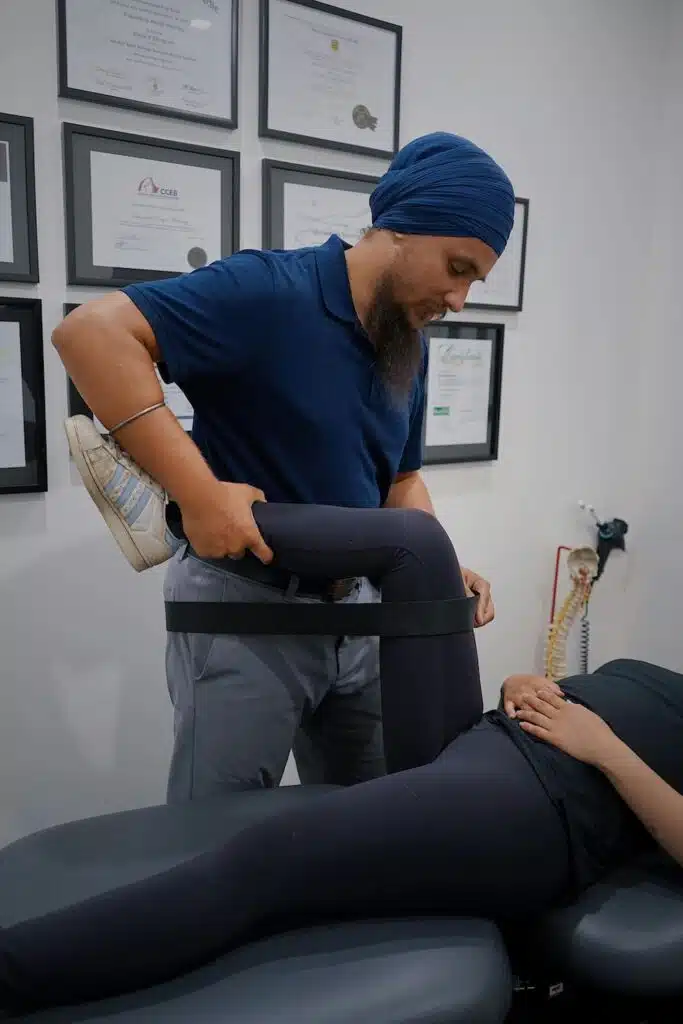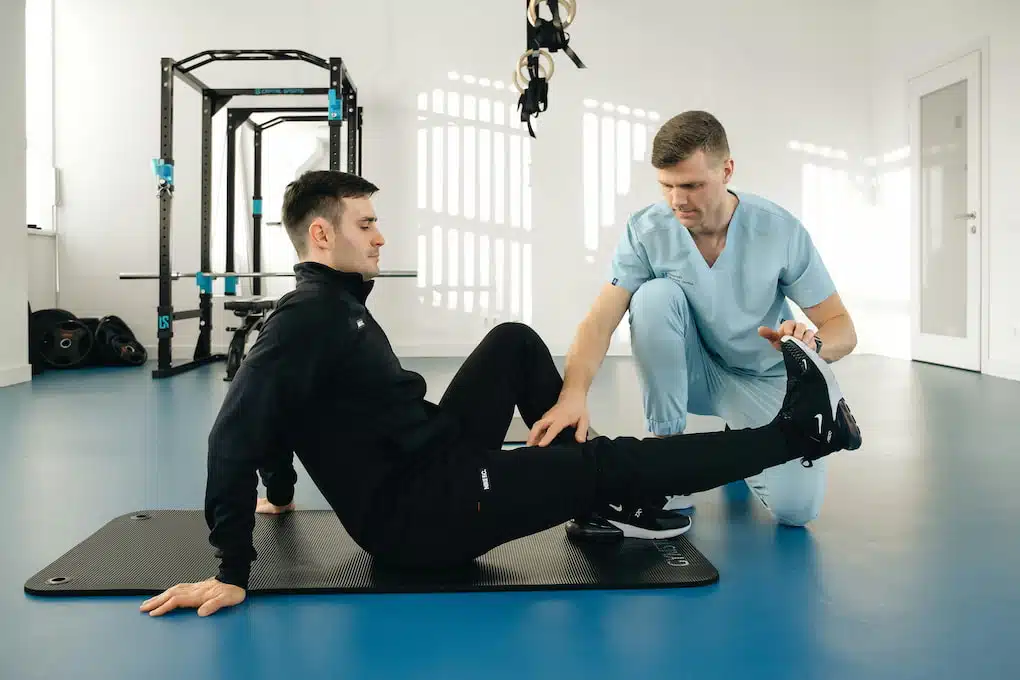
Leg pain and inflammation are common grievances that can profoundly impact daily functionality, restricting mobility and inducing discomfort. Fortunately, they are manageable using noninvasive leg pain and inflammation management.
This blog provides an overview of each treatment option, explaining how they can relieve pain and reduce the need for medications.

Enduring leg pain can bring about discomfort and limit mobility for an extended period of time. This can impede basic physical activities such as walking, climbing, and exercising.
Common causes of leg pain and inflammation include the following:
Leg pain can often be traced back to issues within the spine, particularly the lower back. The spine houses the spinal cord, which sends nerve signals throughout the body, including the legs. Misalignments in the vertebrae can compress or irritate the spinal nerves, leading to pain, numbness, tingling, or weakness in the legs.
Chiropractic care for leg pain restores proper alignment to the spine, alleviating pressure on the spinal nerves. By using targeted, controlled force to adjust the vertebrae, a chiropractor for leg pain and inflammation can reduce nerve irritation that causes leg pain. Regular chiropractic care can also enhance overall spinal health, improve mobility, and prevent future episodes of pain by keeping the nervous system operating optimally.
Massage therapy improves circulation in the legs, enhancing blood flow to the muscles and tissues. It promotes the delivery of oxygen and nutrients while aiding in the removal of metabolic waste products, which can reduce inflammation and muscle tension. Moreover, massage therapy helps to relax tight muscles and release trigger points, which are common contributors to leg pain.

Several massage techniques provide unique benefits for managing leg pain and inflammation.
Cryotherapy exposes the body to extremely cold temperatures. When subjected to these cold temperatures, blood vessels constrict, reducing blood flow and decreasing inflammation. Additionally, the cold temperature numbs nerve endings temporarily, providing immediate relief from pain sensations.
There are two main approaches to cryotherapy: whole-body and localized. Whole-body cryotherapy involves exposing the entire body to extreme cold in a chamber. In contrast, localized cryotherapy targets specific areas with controlled cold therapy, which is effective for treating acute injuries.
Physiotherapy helps manage leg pain and inflammation by improving mobility, strength, and function. It employs several modalities to address leg pain effectively.

Your diet can exacerbate or alleviate inflammation. While no singular anti-inflammatory diet exists, experts advocate for holistic dietary patterns for leg pain and inflammation management.
Notably, certain food categories may help reduce inflammation.
Noninvasive leg pain management offers several benefits.
One key advantage is the reduced risk of complications. Noninvasive treatments typically involve less trauma to the body, minimizing the chances of infection, bleeding, or other surgical risks.
Additionally, noninvasive approaches often lead to shorter recovery periods. They promote healing and rehabilitation without the extended downtime associated with surgery. This allows individuals to return to their daily activities and routines more quickly.
Moreover, noninvasive treatments contribute to improving overall quality of life beyond simply relieving pain. By addressing underlying health conditions, these approaches promote holistic well-being. They can help individuals regain independence, confidence, and emotional stability, fostering a sense of empowerment and control over their health.
Your legs carry you through life. Dealing with leg pain, no matter the cause, can be tough. Exploring noninvasive leg pain and inflammation management options can prevent the need for surgery and dependence on painkillers.
Zaker Chiropractic clinics have on board a team of experienced healthcare professionals dedicated to providing holistic and well-rounded treatment of leg pain. Our practitioners in Newport Beach, Torrance, and San Pedro bring years of expertise and specialized training in various disciplines.